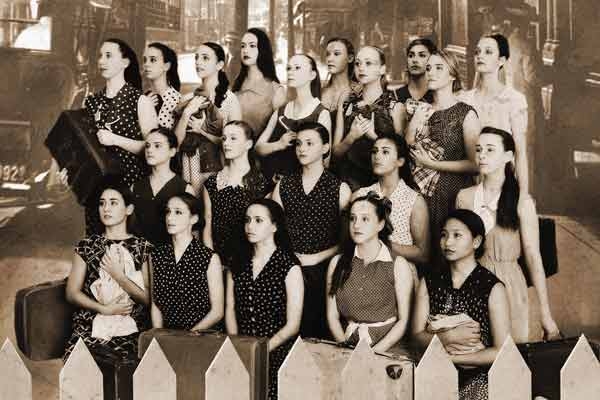Beginning with the iconic red poppies, and transporting the audience back to the 1930s with the announcement that Britain had declared war on Germany, 'Left Behind' seeks to tell the story of women whose husbands have been called to serve in World War II.
The very talented young dancers of Merge Dance Theatre in red tutus set the scene as poppies, but the heart of the performance begins with a married couple eating dinner before the war begins. The movements of the wife, soon to find herself alone, are mirrored by a stage full of female dancers. This suggests that the scene is being replicated in households across the country. A photo of the woman and her husband is projected onto the back wall.
His image fades as the performance unfolds, leaving just the wife, in old-fashioned black and white, staring into the audience. 'Left Behind' is very powerful, with individual solos dripping with loss and heartbreak.
Group choreography is used very effectively, with dancers for example bunched together breathing, so that they form a mass lifting and falling with each exhalation. It really delivers the claustrophobia of grief, and of not knowing if your husband will return alive.
One particularly evocative scene has letters falling from the sky, with projected voices reading each letter out loud. They slowly begin to overlap, until one dancer realises she hasn’t received any word from the front line. Panic ensues, and the depth of emotion is communicated forcefully – there were quite a few sniffles from the audience as the dancer dashed frantically around the stage.
The performance ends where it began, the original woman eating at her table. This time, however, she is eating with her young son. While the programme explains that this symbolises life moving on, the dance could perhaps have been strengthened by examining women’s experience of war outside of their relationship with males.
While being left behind when your husband goes off to war must of course be devastating, other dimensions of women’s roles in the war effort could have been explored. However, this doesn’t detract from the haunting power of the dance in 'Left Behind'.






